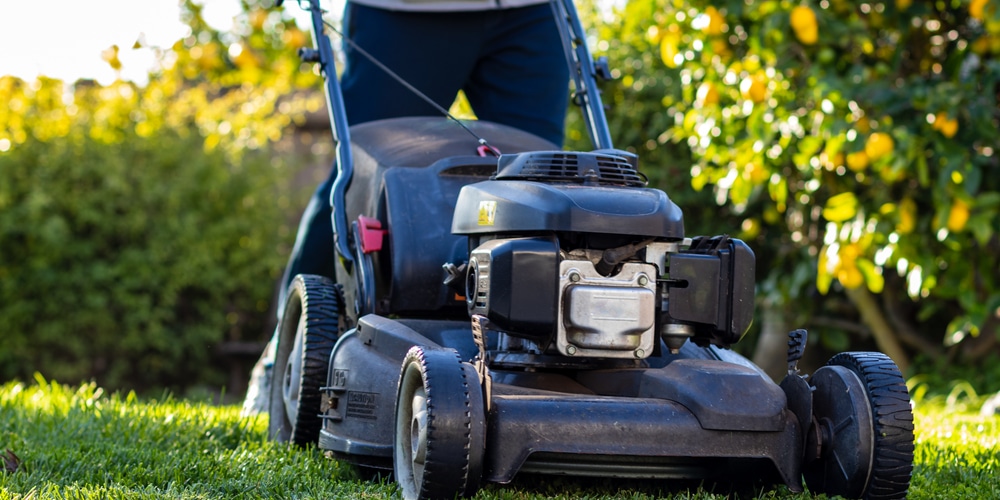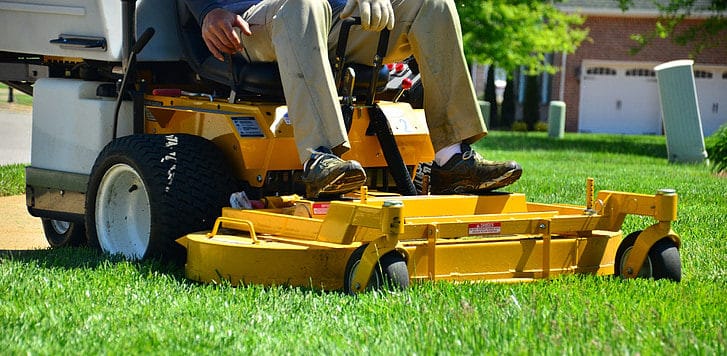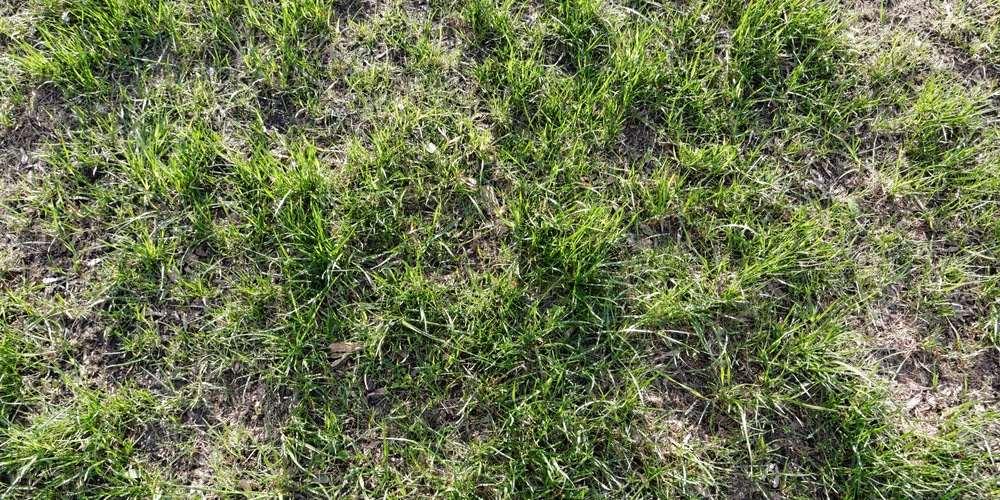What Your Lawn’s Needs to Thrive

To keep your Illinois lawn thriving, you need to synchronize your care routine with the shifting Midwestern seasons.
It is crucial to comprehend the types of grass you have and their specific needs during each month.
Grass Types:
Illinois lawns typically consist of cool-season grasses such as Kentucky Bluegrass, Perennial Ryegrass, Tall Fescue, and Fine Fescue.
These grasses flourish in cooler temperatures of early spring and fall.
Soil Testing:
Begin with a soil test to identify its pH and nutrient levels.
This will guide your fertilization and amendment strategy for a healthy lawn.
Monthly Checklist Basics:
- Spring (April-May):
- Fertilize to kickstart growth.
- Apply pre-emergent herbicides.
- Summer (June-August):
- Water your lawn deeply, preferably in the early morning, to encourage deep root growth.
- Mow regularly, keeping the blade high to prevent stress.
- Fall (September-November):
- Apply another round of fertilizer in early fall to recover from summer stresses.
- Late fall fertilization strengthens grass for winter.
- Winter (December-March):
- Limit foot traffic on frozen lawns to avoid damage.
Mowing:
Mow as needed, never removing more than one-third of the grass blade length to avoid shocking your lawn.
Ensure mower blades are sharp for clean cuts.
Watering:
Your lawn typically needs about 1 inch of water per week, either from rainfall or supplemental watering.
Monthly Maintenance Tasks
Your lawn is a living, breathing thing, and its care is an ongoing process with specific monthly tasks.
These tasks ensure that your lawn remains healthy, green, and lush throughout the different seasons.
Assessing Lawn Health
Begin each month by taking a walk around your yard to assess the health of your lawn.
Look for signs of uneven growth, discoloration, or pests.
Make note of any bare spots or problematic areas that may need extra attention.
Weed Management
Weeding should be addressed promptly to prevent them from spreading.
Identify and remove any weeds early on and consider applying a pre-emergent herbicide to discourage new growth.
Keep an eye out for invasive species specific to Illinois such as dandelions or crabgrass.
Fertilization Schedule
Fertilize your lawn during key months:
- Early spring (April to early May)
- Early fall (early September)
The right fertilizer will replenish essential nutrients and prepare your lawn for the upcoming seasons.
Watering Guidelines
Your lawn’s watering needs change with the seasons, but as a rule of thumb:
| Month | Watering Frequency |
|---|---|
| April | Start regular watering as the grass green |
| May to August | 1 to 1.5 inches per week |
| September | Taper down as temperatures drop |
Mowing Techniques
Mow your grass to an ideal height of 2.5 to 3 inches, which can promote root development and discourage weeds.
Sharpen mower blades to ensure a clean cut, and mow often enough that you’re never removing more than one-third of the grass blade’s length at a time.
Seasonal Considerations
Proper lawn care is essential throughout the year to maintain a healthy, vibrant lawn.
Transitioning from one season to another requires tailored practices to address your lawn’s unique needs during each phase of growth and dormancy.
Spring Preparation
In Illinois, preparing your lawn in spring sets the stage for healthy growth.
- Early Spring (April to early May): Begin by fertilizing to kickstart growth. Apply pre-emergent herbicides to prevent weed germination.
- Mowing: Start mowing once the grass is actively growing, typically when it reaches 3 inches tall.
Summer Care
Your lawn will need support to withstand the stress of hot summer months.
- Watering: Provide at least 1 inch of water per week, either through rainfall or irrigation, early in the morning.
- Mowing: Raise the mower blade to allow grass to grow longer, shading the soil and roots from the intense sun.
Fall Lawn Management
The fall is a crucial time for lawn care to recover from summer stress and prepare for winter.
- Early Fall (early September): Apply fertilizer to help recovery. Reseed sparse areas.
- Late Fall (early November): Fertilize again to strengthen the grass roots for the coming winter.
Winterizing Your Lawn
Taking steps to winterize your lawn will protect it during the cold months.
- Clear Debris: Remove fallen leaves and branches to prevent disease and pests.
- Final Mowing: Cut the grass slightly shorter to minimize snow mold formation.
Equipment Maintenance
Proper maintenance of your lawn care equipment ensures longevity and peak performance throughout the gardening season.
Mower Care
To keep your lawn mower in top shape, perform these specific care routines:
- Blade Sharpening: Sharpen the blades at least twice during the growing season; once at the start and again mid-season. If used heavily, sharpen every 25 hours of mower use.
- General Inspection: Before each use, check for loose bolts, worn belts, and oil levels.
- Air Filter Cleaning: Clean or replace the air filter regularly, as a clogged filter can decrease engine efficiency.
Tool Upkeep
For optimal functioning of your lawn care tools, follow these maintenance tips:
- Winterizing: Clean and dry all tools before storing over winter. Apply a light coating of oil to metal surfaces to prevent rust.
- Regular Cleaning: Remove soil and debris after each use to extend the lifespan of your tools.
Solving Common Lawn Problems
In Illinois, lawn care involves a proactive approach to tackling pests, preventing diseases, and managing soil conditions.
Early identification and timely intervention are crucial for maintaining a healthy lawn.
Dealing With Pests
Identify pests: Start with identifying the common lawn pests in your area, such as grubs or chinch bugs.
Symptoms of infestation include brown patches and thinning grass.
- Grubs: Apply a suitable insecticide during mid-summer, following the instructions carefully.
- Chinch bugs: Treat with insecticidal soap or neem oil, especially during dry, hot periods.
Disease Prevention
Fungal diseases: Illinois lawns can suffer from fungal diseases like brown patch or dollar spot.
- Water management: Water your lawn deeply but infrequently in the early morning to reduce excess moisture on grass blades.
- Proper fertilization: Use a balanced fertilizer to prevent the excessive growth of tender grass that is more susceptible to diseases.
Addressing Thatch and Soil Compaction
Thatch removal: A thin layer of thatch is normal, but more than a half-inch can harm your lawn.
- Remove excess thatch using a dethatching rake or machine in the early fall.
Soil compaction: Compacted soil prevents proper water, nutrient, and air penetration.
- Aeration techniques:
- Core aeration: Best done in the fall, it involves removing soil plugs to improve air exchange.
- Spike aeration: Use when less soil disturbance is required.
Frequently Asked Questions
Proper lawn care in Illinois requires understanding the right timing and techniques for maintenance tasks that align with the Midwest’s unique climate and conditions.
What is the best monthly maintenance schedule for lawn care in Illinois?
In Illinois, lawn care tasks vary monthly.
In spring, focus on fertilizing and pre-emergent weed control. Summer calls for consistent mowing and watering.
By fall, aerate and overseed your lawn, and in winter, minimize foot traffic to protect dormant grass.
How should lawn fertilization be timed throughout the year in Illinois?
Fertilize your lawn in early spring (April to early May) to kickstart growth, in early fall (early September) to recover from summer stress, and in late fall (early November) to strengthen the grass before winter.
What are common lawn diseases in Illinois and how can they be prevented?
Illinois lawns are susceptible to diseases like brown patch, dollar spot, and rust. Prevent these by ensuring proper fertilization, adequate drainage, and cutting grass at the recommended height.
How frequently should lawn mowing occur in different seasons in Illinois?
During Illinois’ growing season, mow your lawn weekly to maintain a height of 2.5 to 3 inches, which may also help prevent weeds. In times of growth slowdown, reduce mowing frequency accordingly.
What specific lawn care steps are recommended by the Illinois Extension service?
The Illinois Extension service recommends soil testing every 2-3 years, regular aeration, applying the correct type and amount of fertilizer, and choosing suitable grass types for the region to foster healthy, resilient lawns.
At what intervals should watering be done for optimal lawn health in Illinois?
Water your lawn deeply and infrequently, ideally in the morning, to provide an inch of water weekly.
Adjust your watering schedule based on precipitation, temperature, and soil type to maintain consistent moisture without overwatering.
Last update on 2025-04-18 / Affiliate links / Images from Amazon Product Advertising API





